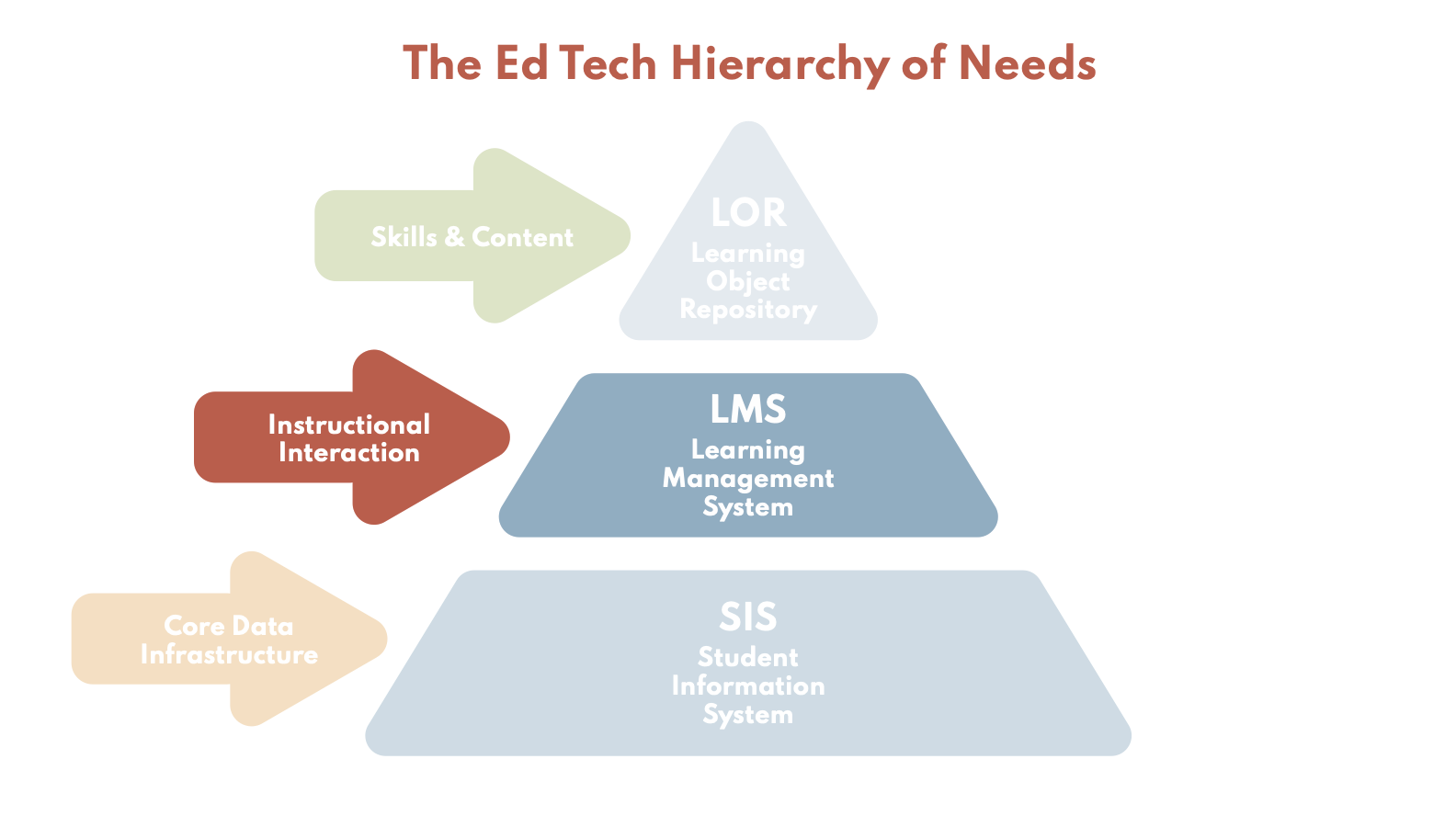As we discussed in the first post of this series for evaluating your student information system (SIS), the software we use in our edtech stacks are the tools we use to stay organized and keep instruction moving forward which are used by the largest swath of our learning communities. Specialists throughout our schools and in our district central offices may use other tools for productivity or supporting compliance and daily operations, but those platforms in which we invest our instructional intellectual property are the spine of our digital ecosystems tied to the core mission of helping kids grow.


Evaluating the learning management system (LMS) is the focus of this piece. The LMS is where instructional interaction occurs. It’s been said that the teacher is the learning management system and that learning transpires not in schools or in classrooms, whether digital or brick and mortar; but in the learner. Keeping in mind that these sophisticated platforms don’t usurp or displace the exchange between a teacher and learner is an excellent stance for evaluating whether or not the LMS (or how your current LMS has been used thus far) is serving your needs and respecting the agency of both the teacher and the learner.
The goal of this piece is to sharpen discernment for edtech planning and calibration, not favor one vendor over another. Knowing a bit about the other popular options in comparison may assist with continuing further as edleaders plan not just for improving learning this spring semester as well as facilitating a well-designed learning experience for the coming school year.
There are valid reasons to stay with the vendor that you are already familiar with, as long as the sunk cost fallacy isn’t keeping you from exploring other options — a typical road block to change. This is an opportune moment for making sure the vendor’s solution is meeting your needs in the present without undermining longer term growth opportunities such as new learning models or other strategies edleaders are desiring to cultivate and nurture with teachers. For example, a consideration for a change might be to enable deeper engagement in personalized learning amidst remote or hybrid models of support than prior solutions afforded.
Across Texas, schools use a variety of LMS and have for some time, and there are clear frontrunners that have pulled away from other options as a combination of the product’s quality in breadth and depth of features, affordability, and ease of use. The top three cloud-based LMS are:
There are other vendors to add to the list, both emergent and established, but for the sake of this evaluation exercise, we will start with a high level comparison then introduce a few prioritized topics as a frame for evaluating any vendor’s offering.
Starting with this year’s major LMS headline, when TEA chose Schoology over other options and partnered to execute a wide sweeping vision for equipping all Texas schools with a high-performing LMS, it should’ve piqued the interest of current PowerSchool users since the world’s largest SIS had acquired Schoology in November of 2019. Yet that doesn’t necessarily mean such data interoperability between the two platforms is superior. There are so many other contributing variables that such a conclusion is too simplistic. Canvas and PowerSchool have had an integration for years and it behooves both companies to uphold it given the millions of users on each. Also, PowerSchool’s unified classroom was built largely from acquiring other edtech companies more than creating new solutions with features that span both SIS and LMS categories in the edtech stack.
In 2014, Google Classroom came along and snuck into thousands of schools as a new part of their already established cloud-based productivity suite with tight integrations to each of those tools teachers and students alike had been using in lieu of Microsoft Office. It’s hard to believe children born when Classroom first launched are now old enough to be students using it in kindergarten or first grade. That ease of use has been quite attractive to teachers of younger learners. Classroom is free and it feels like a free offering, missing core functionality that would put it on par with Canvas and Schoology. Early on, Google Classroom wasn’t an LMS as much as it was a teacher friendly “content management system” for curating and posting learning activities. As such it was a boon for teachers with their Google Drives loaded with lessons in Docs or Slides, right alongside the Forms and Sheets they were using to track formative assessment data. For many teachers, that was and still remains enough. And for many administrators, free is worth criticisms about the data ethics arguments that flare up on occasion. Google is committed to Classroom continuing to expand its functional footprint, but seemingly uninterested in taking the bait to toe the line with Canvas like Schoology did.
To that end, if you ask a hundred teachers and administrators what features should be included in an LMS, you’ll get a hundred different lists. Presuming the vendor itself is a healthy company with excellent data privacy and security measures, let’s try to consider the software’s essential feature inclusions itself. All LMS should have the best user experience in the following categories:
The curse of any enterprise-grade platform is that it’s a significant effort to be an expert on all functions and how effective they are at solving the problem for which they were designed. Even so, staying close to your account representative and subscribing to any published literature or online forums can further the value for your students and teachers. Consider the following prompts for getting the most out of your LMS.
For more on auditing and developing your tech stack see:
Stay in-the-know with innovations in learning by signing up for the weekly Smart Update. This post includes mentions of a Getting Smart partner. For a full list of partners, affiliate organizations and all other disclosures, please see our Partner page.